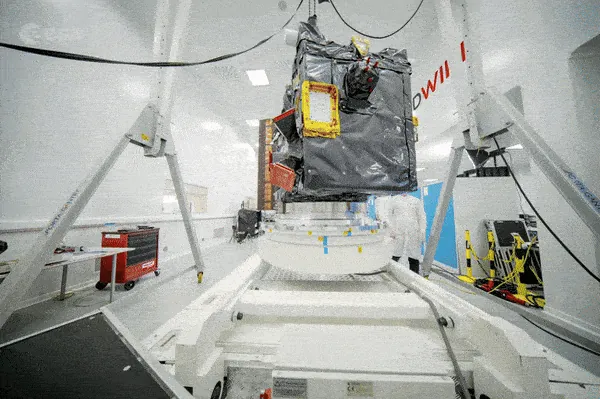
Europe Bids Adieu to Groundbreaking Proba-3 Mission on Its Journey to India!
2024-10-31
Author: Jia
Introduction
In a significant step forward for solar science, the European Space Agency's (ESA) Proba-3 mission, designed to create engineered solar eclipses, is preparing for its launch from India. The two pioneering spacecraft, which will work in precise formation to cast shadows upon each other, have officially left the Redwire Space facilities in Kruibeke, Belgium. They are now en route to the Satish Dhawan Space Centre near Chennai, where the final stages of the launch campaign will commence.
Mission Overview
“This ambitious mission represents years of dedicated efforts,” said ESA mission manager Damien Galano. “Proba-3 will allow us to observe the Sun’s elusive corona continuously, something we’ve only glimpsed during brief terrestrial solar eclipses. Maintaining an exact position between the two satellites is crucial; they must maintain a distance as precise as one millimeter—about the thickness of your fingernail.”
Launch Schedule
Scheduled to be flown to India on November 2nd, the mission aims to launch on December 4th. This historic launch marks the first occasion that ESA has sent a mission from India since the successful Proba-1 Earth-observing satellite debuted in 2001.
Challenges in Transit
However, the journey wasn't without its challenges; a delay occurred due to issues with air freight acceptance, as the spacecraft originally had their batteries installed. The issue was swiftly resolved by removing and shipping the batteries separately.
Launch Details
The Proba-3 spacecraft will be launched together using the PSLV-XL rocket from the Indian Space Research Organisation (ISRO). This powerful launcher is well-suited to deliver the combined 550 kg payload into a highly elliptical orbit, which will extend up to 60,000 kilometers before dipping down to just 600 kilometers above Earth.
Mission Objectives
This elevated trajectory is crucial for the active formation flying that the satellites will perform, allowing for a sustained duration of six hours at a time where Earth's gravitational influence is lessened—a strategy that will reduce the fuel required for adjustments during their mission.
Industrial Collaboration
A diverse industrial collaboration from 14 ESA member states, including contributions from Canada, has come together to bring this mission to fruition. Sener in Spain leads the project, with significant support from Airbus Defence and Space, Redwire Space, GMV, and Spacebel, among others.
Key Instruments
One of the mission's key instruments is the ASPIICS (Association of Spacecraft for Polarimetric and Imaging Investigation of the Corona of the Sun), which will enable unprecedented observation of the Sun's corona. Meanwhile, the secondary Occulter spacecraft is equipped with a 1.4-meter disk designed to obscure the Sun's direct light, allowing for clearer data collection by the Coronagraph spacecraft. This Occulter also hosts the DARA (Davos Absolute Radiometer) instrument, which measures the Sun’s total energy output, crucial for climate monitoring.
Additional Research Tools
In addition, a third instrument developed by Belgium's Catholic University of Louvain will analyze the energetic electron spectra within Earth's radiation belts, providing essential insights for space weather prediction.
Mission Control Operations
All mission control operations for Proba-3 will be conducted from ESA’s European Space Security and Education Centre (ESEC) in Redu, Belgium, where staff are currently engaged in comprehensive pre-launch simulations and training.
Conclusion
As the countdown to this groundbreaking mission continues, scientists and engineers alike remain buzzing with anticipation. The Proba-3 mission promises to reshape our understanding of solar dynamics and contribute to broader climate studies—stay tuned as Europe takes a bold leap into the future of space exploration!



 Brasil (PT)
Brasil (PT)
 Canada (EN)
Canada (EN)
 Chile (ES)
Chile (ES)
 España (ES)
España (ES)
 France (FR)
France (FR)
 Hong Kong (EN)
Hong Kong (EN)
 Italia (IT)
Italia (IT)
 日本 (JA)
日本 (JA)
 Magyarország (HU)
Magyarország (HU)
 Norge (NO)
Norge (NO)
 Polska (PL)
Polska (PL)
 Schweiz (DE)
Schweiz (DE)
 Singapore (EN)
Singapore (EN)
 Sverige (SV)
Sverige (SV)
 Suomi (FI)
Suomi (FI)
 Türkiye (TR)
Türkiye (TR)